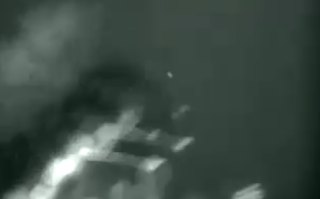We are developing this idea:
'The sequence would start with a closed eye (mise-en-scene of pretty makeup). When the eye opens, there is a camera-like flash, which then cuts to the main character walking down an alley-way. The screen would then flicker, as through with interference, and then show in black in white, the main character killing someone in the same alleyway. The screen would then flicker again and go back to the main character simply walking, and the person she was seen killing walks past - reaction shot. A voice over will then start as she is shown writing on pads of paper and screwing them up etc as she explains how she cannot discern what is and isn't real. Filtered music would start with the faster pace of editing and she would be shown trying to take pictures of what she has done - the flash would show fast images of her killing people and stealing etc. It would then show that in the folder where she saved her pictures there is nothing. It could then cut to her closing her eye (mise-en-scene of dark make up) and then black screen and then to her face. She would say how she doesn't know who she is. A knocking on the door would change her thoughts and she would get up and turn off the music, run downstairs, the camera looking at the door as she opens it and the visitor greets her, finally cutting to the name of the film.'
The sub-genre is psychological thriller, with strong themes of identity and reality. The credits shown in the opening sequence would not be intrusive to the opening, in a simple text such as:
'Panther Production Presents'
This would be done so not to take away any of the building atmosphere and uncertainty portrayed in the first 2 minutes. The film will be called 'Evanesce' which means 'vanish'. This title is speaking to how the main character's personality is vanishing and she is becoming someone else. Within the first opening 2 minutes there will only be the main character, named Lucy Rima. Her first name is a reference to Lucifer, as she has sinned.
We plan to film in several locations:
- Sam's house
- An alleyway
- Various outdoor places, eg. in gardens, backstreets.
We won't concentrate hugely on the lighting, as there are many effects we wish to use on final cut to manipulate our footage. In the 'good' parts, we are planning to over-exaggerate the brightness of the colours, and we are filming the 'bad' parts in black and white, in which we can change the saturation to mould effects. The mood will be strange and creepy, with an emphasis on bright colours and then the huge contrast of simple black and white.
Costumes will be quite simple: for her 'good' side, Lucy will be wearing a dress and tights, with natural looking make up and pink nail polish. For her 'evil' persona she will be wearing black trousers, top, black leather jacket, black knee-high-boots, black nail polish and with dark make up.
The sound will mostly consist of non-diegetic string undertones, and the voice of Lucy. Also included would be muffled effects, such as camera noises. Lastly there would be a partial, diegetic soundtrack included to create an atmosphere, which would then be switched off by Lucy.
Most of the camera shots will be either long shot or close to extreme close ups. The long shots will often be canted angles as they will be when Lucy is murdering people, and the close ups will be of key props, for example a knife, her eye, a chain used to strangle someone etc. The editing will be a mix of continuity and montage. The beginning will be continuity until the diegetic music starts. This will then change to montage editing with close ups of murder weapons and long shots of the murder, until the music is then stopped. The editing will then become continuity again.




















